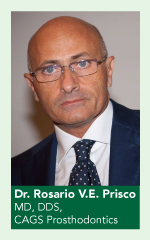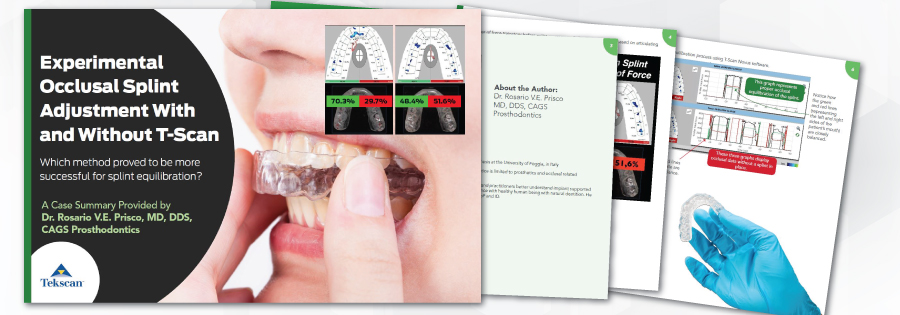 Occlusal Splint (OS) therapy is a non-surgical technique used to protect teeth, relieve orofacial pain, preview the patient response to a simulated occlusal correction, or reduce habitual tooth grinding (Bruxism). In this case study, you'll see how Dr. Rosario V.E. Prisco, MD, DDS, CAGS Prosthodontics, Boston University, a well-known prosthodontist of 25 years, uses T-Scan to help aid in the fabrication of a Michigan or “full coverage” splint in order to improve the occlusal balance of a patient.
Occlusal Splint (OS) therapy is a non-surgical technique used to protect teeth, relieve orofacial pain, preview the patient response to a simulated occlusal correction, or reduce habitual tooth grinding (Bruxism). In this case study, you'll see how Dr. Rosario V.E. Prisco, MD, DDS, CAGS Prosthodontics, Boston University, a well-known prosthodontist of 25 years, uses T-Scan to help aid in the fabrication of a Michigan or “full coverage” splint in order to improve the occlusal balance of a patient.
Patient Overview
A 22-year-old patient in overall good health and a split user had been suffering with muscular pain for some time
- T-Scan readings showed that her occlusion was not well balanced, and she had several early-tooth force contacts
- While his usual protocol would be to use T-Scan in this splint equilibration process, with the patient's acceptance, Dr. Prisco decided to try equilibrating her splint based on articulating paper alone.

You may access this case study by clicking the links below
Download Low Resolution (3MB)